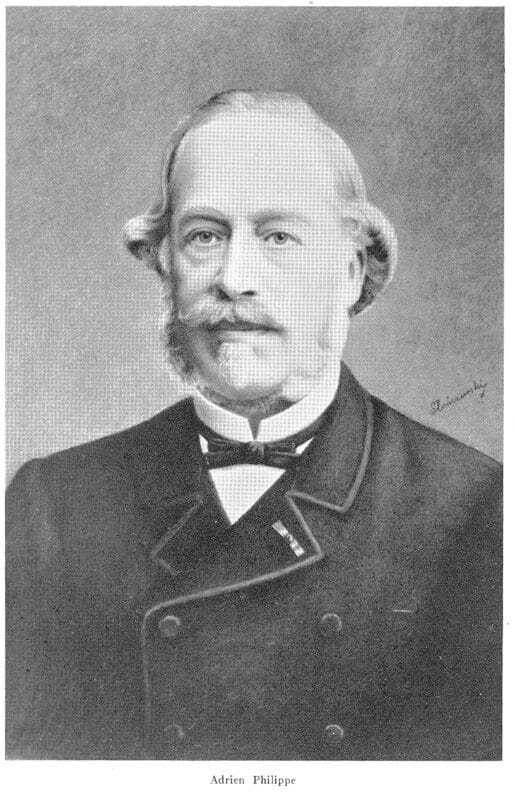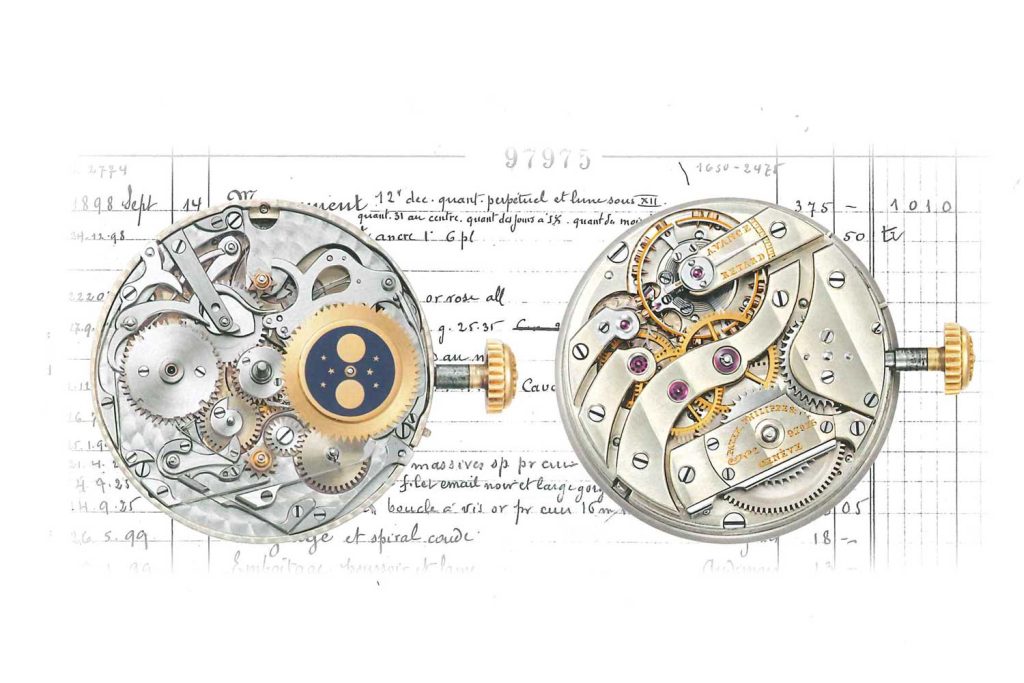Blog about Watches, Jewelry & Bags, Watch Blog
Exploring the History of Patek Philippe Watches
Patek Philippe is always rated by experts and enthusiasts as one of the most prestigious and top-tier wristwatch brands in the world. The brand is renowned for designing and manufacturing some of the most intricate and complex mechanical watches, coveted by every contemporary gentleman. Follow Py-Luxury to learn more about the history of Patek Philippe Watches as the article below:
The Development History of the Patek Philippe Watch Brand
The Origin Phase
Patek Philippe was founded in 1839, starting from the collaboration between Norbert Antoine de Patek, a Polish nobleman and entrepreneur, and Franciszek Czapek, a fellow Polish watchmaker. Initially, the company was named “Patek, Czapek & Cie” and headquartered in Geneva, Switzerland.
Antoine Norbert de Patek (1811-1877)
After the failed uprising against Tsarist Russia in 1830, Antoine Norbert de Patek had to leave his homeland and wander through various lands before arriving in Geneva in 1835. In 1839, he partnered with Franciszek Czapek to establish Patek, Czapek & Cie.
Antoine Norbert de Patek’s life was full of incidents and migrations. After the failed uprising against Tsarist Russia, he was forced to leave Poland and live in several places such as Germany and France before settling in Switzerland. There, he married Marie-Louise Adelaide Elisabeth Thomasine Dénizard and began his career in watchmaking.
Patek was not only a skilled watchmaker but also an innovative entrepreneur. He saw great potential in combining his skills with those of Franciszek Czapek, an excellent watchmaker. This partnership created intricate and unique watches, helping the Patek Philippe brand quickly gain fame.
Adrien Philippe (1815-1894)
Adrien Philippe was the inventor of the keyless winding mechanism for watches, a significant innovation in the watchmaking industry. He joined Patek & Cie in 1844 after winning a gold medal at the French Industrial Exposition. In 1851, the company officially changed its name to Patek Philippe, marking the birth of a legendary brand.

Adrien Philippe, at the age of 18, left his homeland to hone his skills as a watchmaker. He worked in several places in France and England before meeting Antoine Norbert de Patek at the French Industrial Exposition in 1844. Philippe’s invention of the keyless winding mechanism earned him a gold medal and an invitation to collaborate with Patek. The combination of Patek and Philippe’s talents created top-notch watches in both technology and aesthetics.
Notable Historical Milestones
The Royal Brand
From its early days, Patek Philippe has been favored by royalty and nobility. In 1840, Russian Princess Zubów purchased a pendant watch engraved with the royal crest, one of the company’s first watches. Queen Victoria of England also owned a Patek Philippe watch at the Great Exhibition in London in 1851, solidifying the brand’s reputation among royal families worldwide.
Patek Philippe is not just a luxury watch brand but a symbol of power and wealth. Since its early years, the brand’s watches were crafted specifically for royalty and nobility. These watches are not merely timekeeping instruments but also works of art, reflecting the class and style of their owners.
Partnership with Tiffany & Co.
In 1851, Antoine Norbert de Patek partnered with luxury jeweler Tiffany & Co. in the United States, a relationship that still exists today. This significant step helped Patek Philippe expand its market and establish its position.
The partnership with Tiffany & Co. was a major turning point in Patek Philippe’s history. Tiffany & Co.’s reputation and credibility in the jewelry industry helped Patek Philippe reach the upper-class clientele in the United States. This partnership not only brought in significant revenue but also elevated the Patek Philippe brand on the international stage.
Technological Advances
Patek Philippe has always been at the forefront of adopting new technology and innovation in watch design. In 1868, the company crafted the first Swiss wristwatch for Countess Koscowicz of Hungary. In 1889, Patek Philippe invented the perpetual calendar mechanism, a significant advancement for pocket watches.

Patek Philippe’s technological advancements extend beyond improving watch components to exploring new fields. The company invested heavily in research and development to create groundbreaking products that meet the increasing demands of customers. Patek Philippe watches are not only visually stunning but also highly precise and durable, representing perfection in the watchmaking industry.
Change and Development
In 1932, the company was acquired by brothers Charles and Jean Stern, officially becoming a family-owned business. Under the Stern family’s leadership, Patek Philippe continued to thrive with famous models like the Star Caliber 2000 and Sky Moon Tourbillon.
The Stern family has significantly contributed to Patek Philippe’s success and sustainable development. Under their guidance, the company maintained its traditional values while continuously innovating and growing. Breakthrough models like the Star Caliber 2000 and Sky Moon Tourbillon demonstrated Patek Philippe’s creativity and design sophistication.
Classic and Modern Elegance
Over more than 160 years, Patek Philippe has maintained its position in the global watchmaking industry. The company continually improves to create smaller, thinner, and more reliable watches. With a team of highly skilled craftsmen and innovations in technology and materials, Patek Philippe perfectly combines tradition with modernity.
Patek Philippe is not just a watch brand but a symbol of sophistication, class, and history. The brand’s watches do not need expensive diamonds or special materials; the classic value and meticulous craftsmanship in every detail have made this renowned brand.
Other Historical Milestones of Patek Philippe
In 1851
Antoine Norbert de Patek traveled to the United States and began his partnership with luxury jeweler Tiffany & Co., a relationship that still exists today. That same year, the company’s No. 3503 pocket watch, the smallest in the world, was exhibited at the London Museum.
The 1850s
Despite the Swiss watch industry being adversely affected by the recession, Patek Philippe’s business thrived. In 1853, the company moved to a larger building at 168 rue du Rhône, Geneva.
1854-1858
With a far-reaching vision, Antoine Norbert de Patek chose the best watches to sell through Paris, Liverpool, and New York. He then began his travels and stopped in North America. Shortly after returning to Switzerland, he embarked on another European tour.
In 1868
Patek Philippe crafted the first Swiss wristwatch for Countess Koscowicz of Hungary.
In 1881
The Patek Philippe manufacturing plant created wristwatches and pocket watches for collectors and royalty across Europe. In 1881, Patek Philippe patented the keyless winding and setting system.
In 1889
Patek Philippe invented the perpetual calendar pocket watch, a major advancement in the watchmaking industry.
Early 20th Century
Patek Philippe continued to assert its position with outstanding inventions and advancements. In 1902, the company patented the first split-second chronograph in the world.
In 1932
The Stern family took over Patek Philippe, ushering the company into a new era with prestigious and innovative watch models.
The 1940s-1950s
Patek Philippe continued to grow and expand its market. Famous models like Calatrava and Nautilus were born, becoming symbols of luxury and elegance.
In 2001
Patek Philippe opened the Patek Philippe Museum in Geneva, preserving and displaying the brand’s valuable watch masterpieces and history.
Iconic Patek Philippe Watch Models
Calatrava
First launched in 1932, Calatrava symbolizes elegance and sophistication. With a simple yet extremely luxurious design, Calatrava is always the top choice for those who love classic watches.
Nautilus
Introduced in 1976, Nautilus, with its sporty design and water resistance, quickly became a symbol of strength and style. This watch model was designed by Gérald Genta, one of the world’s most renowned watch designers.
Aquanaut
Launched in 1997, Aquanaut is the perfect combination of sporty style and elegance. With a rubber strap and water resistance, Aquanaut is an ideal choice for outdoor enthusiasts.
Grand Complications
Patek Philippe prides itself on its Grand Complications models, representing the pinnacle of watchmaking art. These watches not only have intricate designs but also feature complex functions such as perpetual calendar, chronograph, tourbillon, and minute repeater.
Gondolo
Gondolo is a watch line imbued with Art Deco style, featuring a square and sophisticated design. This model symbolizes uniqueness and creativity, suitable for those who love a distinctive style.
Patek Philippe’s Contributions to Watchmaking Art
Patek Philippe is not only famous for its exquisite watch models but also known for its significant contributions to the art of watchmaking. The brand always focuses on training and developing a team of skilled watchmakers, ensuring each watch created reaches the highest level of perfection.
Moreover, Patek Philippe heavily invests in research and development, constantly seeking new technologies and innovations to enhance product quality. The brand’s watches are not just timekeeping instruments but also artworks, embodying the perfect combination of tradition and modernity.
Conclusion
Patek Philippe is a symbol of sophistication, class, and history in the watchmaking industry. With over 160 years of development, the brand has solidified its position with prestigious and innovative watch models. From classic watches like Calatrava to sporty models like Nautilus and Aquanaut, Patek Philippe always meets the needs of watch enthusiasts worldwide.
Patek Philippe’s contributions to watchmaking art go beyond creating top-notch products to preserving and developing traditional values. Each Patek Philippe watch is not just a timekeeping instrument but also an artwork, showcasing the perfect blend of tradition and modernity.
Patek Philippe is not just a watch brand but a symbol of sophistication, class, and history. The brand’s watches do not need expensive diamonds or special materials; the classic value and meticulous craftsmanship in every detail have made this renowned brand.
Discover: Collection of Patek Philippe Replica Watches

